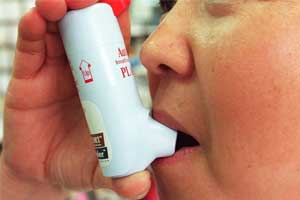- Home
- Editorial
- News
- Practice Guidelines
- Anesthesiology Guidelines
- Cancer Guidelines
- Cardiac Sciences Guidelines
- Critical Care Guidelines
- Dentistry Guidelines
- Dermatology Guidelines
- Diabetes and Endo Guidelines
- Diagnostics Guidelines
- ENT Guidelines
- Featured Practice Guidelines
- Gastroenterology Guidelines
- Geriatrics Guidelines
- Medicine Guidelines
- Nephrology Guidelines
- Neurosciences Guidelines
- Obs and Gynae Guidelines
- Ophthalmology Guidelines
- Orthopaedics Guidelines
- Paediatrics Guidelines
- Psychiatry Guidelines
- Pulmonology Guidelines
- Radiology Guidelines
- Surgery Guidelines
- Urology Guidelines
Obesity increases asthma risk through changes in airway muscle

Obesity might alter the functioning of airway muscles, increasing the risk of developing asthma, suggests a new research published in the American Journal of Physiology-Lung Cellular and Molecular Physiology.
The asthma-obesity syndrome represents a major public health concern that disproportionately contributes to asthma severity and induces insensitivity to therapy. To date, no study has shown an intrinsic difference between human airway smooth muscle (HASM) cells derived from non-obese subjects and those derived from obese subjects.
People with obesity "also manifest a higher risk of severe asthma, decreased disease control and decreased response to corticosteroids therapy," explained the authors. However, previous studies suggest that some people with obesity may have a type of asthma that is not caused by airway inflammation, but by hyperresponsiveness -- a higher-than-normal response to an allergen -- in the airway smooth muscle. Hyperresponsiveness causes the airways to narrow, obstructing ease of breathing and can occur when the muscles contract or begin to spasm.
The research team combined human airway smooth muscle cells with histamine, a chemical the immune system makes in response to an allergen, and carbachol, a drug that stimulates the part of the nervous system that controls the airways. Stimulating airway cells with these substances causes the cells to release calcium, which mimics muscle contraction.
Also Read: Obesity may exacerbate asthma in children
Key Findings:
- Muscle cells from obese donors released more calcium and had greater shortening -- a function that occurs during muscle contraction -- than the cells from normal-weight donors.
- The cells from female obese donors released more calcium than cells from male obese donors.
These results suggest that obesity "imprints on structural cells [or airway smooth muscle cells] a unique signature that can be identified and that may lead to novel targeted approaches to improve asthma management without the use of steroids," explained Panettieri.
For further reference log on to https://doi.org/10.1152/ajplung.00459.2017

Disclaimer: This site is primarily intended for healthcare professionals. Any content/information on this website does not replace the advice of medical and/or health professionals and should not be construed as medical/diagnostic advice/endorsement or prescription. Use of this site is subject to our terms of use, privacy policy, advertisement policy. © 2020 Minerva Medical Treatment Pvt Ltd